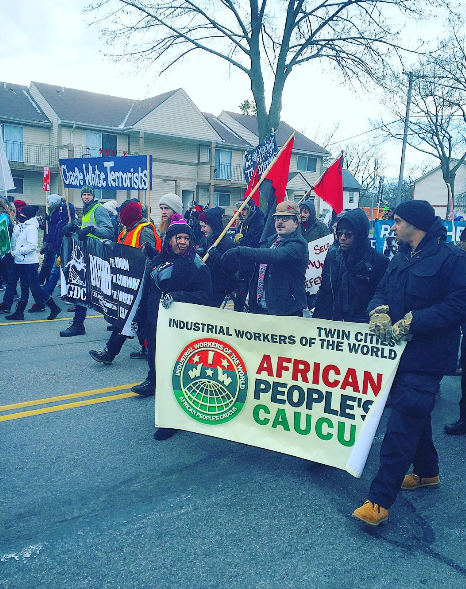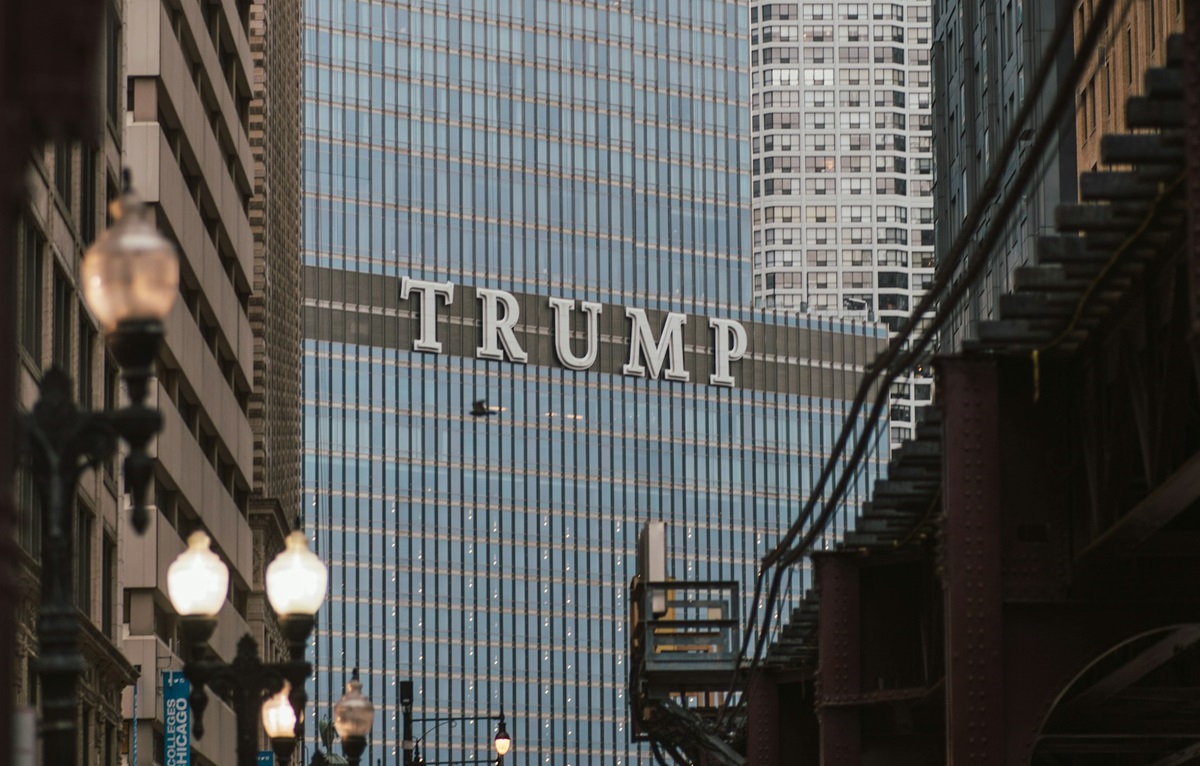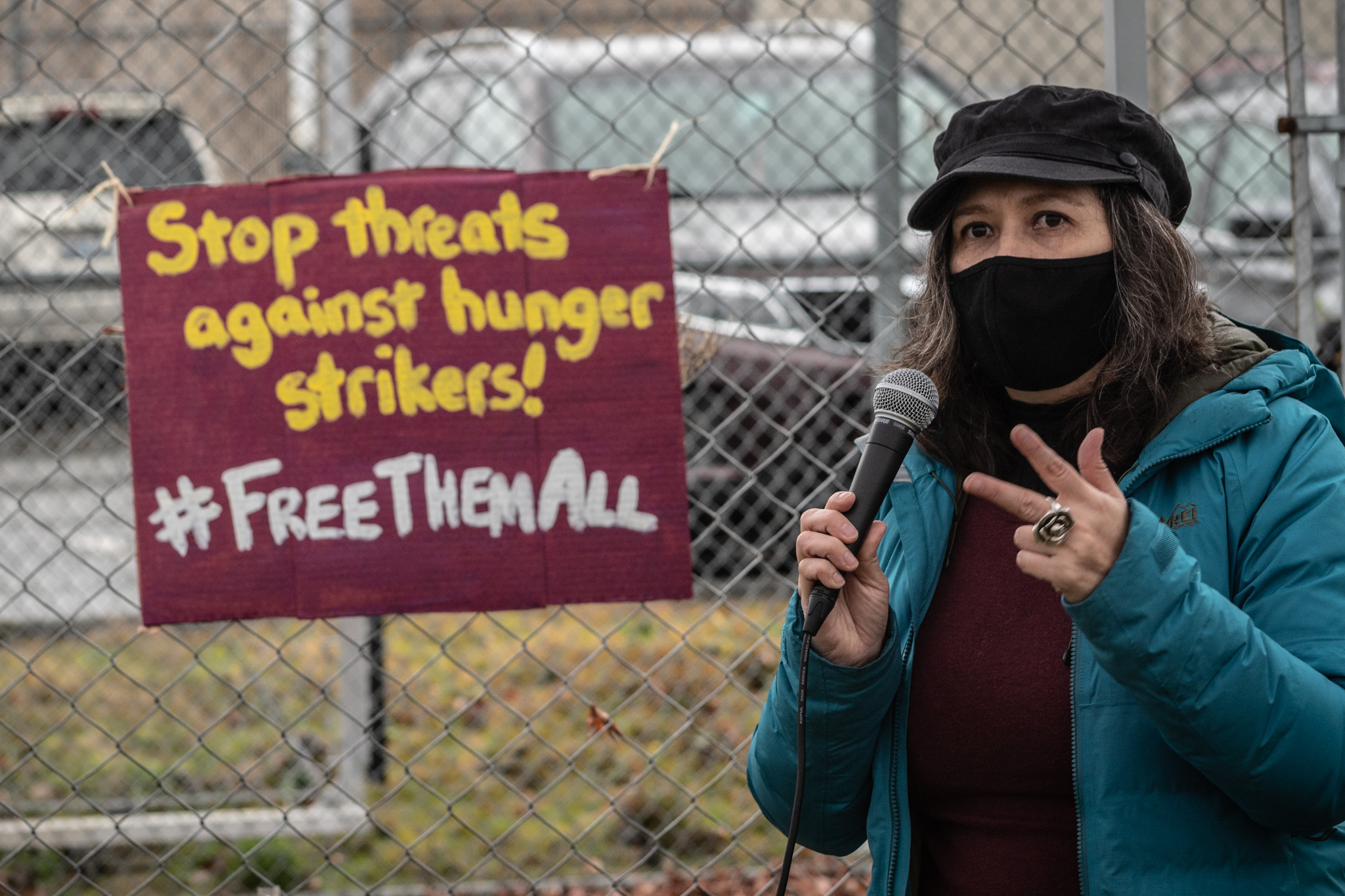Filed under: Analysis, Critique, Labor, US

From Life Long Wobbly
The last general strike in the US was in Oakland in 1946. That year there were 6 city-wide general strikes, plus nationwide strikes in steel, coal, and rail transport. More than 5 million workers struck in the biggest strike wave of US history. So what happened? Why haven’t we ever gone out like that again? Congress amended US labor law in 1947, adding massive penalties for the very tactics that had allowed strikes to spread and be successful – and the business unions accepted the new laws. In fact, they even went beyond them by voluntarily adding “no-strike clauses” to every union contract for the last 70 years, and agreeing that when they do strike in between contracts it will only be for their own wages and working conditions, not to support anybody else or to apply pressure about things happening in the broader society. When we allowed ourselves to lose our most important weapons 70 years ago, we took the first step towards Trump’s America. We’re stuck in the wrong timeline – if we want to get out, we have to bring the militant labor tactics of 1946 back to the future!
The Oakland General Strike began early in the morning of December 3, 1946, when police were trying to break up a picket line of mostly female department store clerks who had been on strike since October 21 (“Back to the Future Day”). A streetcar driver saw it happening and stopped his car. This stopped all the cars behind him. All of the passengers who were no longer going to work began immediately picketing at other businesses in Oakland, calling out those workers, and shutting down the businesses. The strike spread from there. Some important points:
- The heroes of this story are the department store clerks who maintained an effective picket for 6 weeks, shutting down the operations of the business, refusing limitations on their ability to picket, and defending their picket when the cops were trying to break it. We need to re-learn how to organize “hard” pickets which actually disrupt commerce, and how to defend those pickets from our enemies. We also need to reject all of the limitations that courts, and the unions, will tell us we have to impose on our pickets.
- The streetcar driver who stopped his car when he saw the cops breaking the picket deserves an honorable mention, like Peter Norman (“the white dude” at the Mexico City Olympics). He knew which side he was on, and he didn’t just keep moving. He saw fellow workers under attack and he used his power as a worker to support the right side – despite the fact that the retail workers strike had no immediate tie to his own wages and working conditions. He didn’t ask his union if it was OK. He didn’t wait to go back to his union meeting and ask them to pass a resolution supporting the retail workers. Basically, it doesn’t even matter whether he was a union member. It doesn’t even matter if he abstractly thought that women should be quitting their jobs now that World War 2 was over, or if he abstractly supported Jim Crow – he supported fellow workers against the cops. Since 1947, “secondary strikes” like that have been illegal, and his union could have been attacked by the court – but the union probably would have been training him all along that he can only strike in between contracts, and definitely not for anyone else’s cause. We need to reject any limitation on our ability to strike in support of fellow workers, or to strike about things beyond our own specific workplaces.
- The passengers on his streetcar and the ones behind it also deserve credit for immediately forming mass pickets, reinforcing the retail workers’ picket and also spreading throughout the city and pulling other workers out on strike. They didn’t come up with this all in the moment, they learned how to do this over years of tough strikes, including the 1934 general strike in San Francisco that also shut down Oakland. Mass pickets have also been illegal since 1947, and we’ve lost those traditions. We urgently need to relearn them.
- The unions didn’t call the Oakland General Strike – but they sure as hell called it off, and left the retail workers alone in the cold. The general strikes that have happened in the US have almost never been called ahead of time by union. They’ve almost always happened by workers semi-spontaneously going on strike in solidarity with other workers, supporting the demands of the first group and adding their own. (I say “semi”-spontaneously because the working class had years of practice and preparation leading into each strike – something that’s been forcibly removed from our culture over the past 70 years.) Yet by the third day of the Oakland General Strike, the local union leadership was already declaring that the strike was over and everyone except the retail workers should go back to work. As the streetcar drivers were told by their union president, “The International Brotherhood of Teamsters is bitterly opposed to any general strike for any cause. I am therefore ordering you and all those associated with you who are members of our International Union to return to work as soon as possible … No general strike has ever yet brought success to the labor movement.” Once the retail workers were left to keep striking alone, it was only a matter of time before they were beaten and had to give up. If we’re serious about reviving strikes, we need to prepare people as much as we can for how quickly the union leadership and the Democratic Party will do everything they can to prevent strikes from the start, and to get workers back to work..
The 70th anniversary of the Oakland General Strike is coming up in three weeks, on December 3rd. As all of our movements go into overdrive, and we all start networking and holding bigger events than we’re used to, we should consider holding “Spirit of ’46” events across the country on December 3rd to talk about the Oakland General Strike and the relevance of their tactics for today. This is obviously coming up very soon, but it seems do-able, and if it’s presented right, could pull a lot of interest. What else can we start doing to prepare for the kind of labor movement we need – the kind that is ready to stand up to the state and the capitalists? What should we think about the calls that have already started circulating for a general strike to stop Trump’s inauguration?
The “Labor for Bernie” initiative showed the potential for a cross-union, bottom-up movement that fought for big goals, overcame the separation that is built into the labor movement, and directly challenged the right of the Democratic party and the labor bureaucracy to speak for union members or the working class. We’ve all just seen that electoral politics are inadequate to stop fascism – it’s time for union members and supporters to build a similar movement that is based on supporting all labor action, rejecting all limits on strikes and pickets whether they come from the government or the unions themselves, making all pickets effective, and spreading strikes when they occur (through so-called “secondary” strikes and pickets) – as well as driving police out of the labor movement. This movement should organize in city-wide groups independently of any union structure, inviting all workers to be involved, and then those groups could network nationally. The groups should be open to any worker, union member or not, but should keep union and non-profit staff and and high officers out. Once they get going, it is important that they consider themselves to have all of the legitimacy they need to organize pickets or call strikes, whether through calling for mass workplace meetings to organize action or through supporting minority action – these groups will need to do this because the existing labor structures will put brakes on all action by citing their no-strike clauses and respect for labor law. It’s important for these groups to have a name that people can identify with, like “Labor United for All”, “Labor Against Fascism”, or “One Big Union.”
The IWW is experiencing a sudden growth spike, as most radical left groups probably are right now. In particular, the IWW’s General Defense Commitee, which focuses on defense of the working class and community self-defense, is seeing a lot of interest of people wanting to start new locals. The GDC has a picket training that began with the 2005 Northwest Airlines strike, when the union was trying to tell workers to keep the pickets tame and ineffective. The training focuses on the tactics needed to hold effective, disruptive pickets and to maintain them against scabs. These tactics have ended up being very useful for community self-defense. We should try to make sure that we spread this picket training to as many of these new locals as possible, and prepare as many trainers as possible. If we’re going to have the labor movement we desperately need, we’re going to have to re-learn how to hold effective pickets, and how to engage in community self-defense – very, very quickly.
We absolutely need to double down on our support for Latino workers. We need to prepare to mobilize boldly against any repression that they face, and to support them when/if they take action. They’ve already proven through the May Day strikes of 2005 and 2006 that they know how to organize mass industrial action better than any other group of workers in this country. We also need to emphasize our Spanish-language materials and infrastructure in an effort to make our organization a useful tool for Latino workers.
Millions of union members, and workers, voted for Trump. A lot of factors went into this, including massive undercurrents of hatred and bigotry, but it also seems that there was an economic element – many white workers saw him as the only program offering anything different from decades of factory closures, social cuts, and poverty with no escape. Our best bet to win them away from fascism is if we show that we have a real program to fight for, and win, a better world. If we can’t do that, we won’t. (The business union leadership have already thrown themselves on the mercy of the victor and declared that they’re ready to work with Trump – but it’s debatable whether he’ll have any use for them.) We’re on the verge of being in a similar situation for organizing as radicals were during Jim Crow – and we will have to organize in the same way, focusing on the needs and defense of the most oppressed and vulnerable groups of workers and forcing bigots at work to decide whether they’ll side with the boss or with their co-workers. Someone can vote based on abstract bigotry and still choose to side with their flesh-and-blood co-workers against the boss that yells at both of them every day. And if they don’t, they’re scabs, and we’ll have to treat them as such. As CLR James and Grace Lee Boggs put it in 1958:
“if a white worker or group of white workers after reading and contributing to the paper as a whole finds that articles or letters expressing Negro aggressiveness on racial questions make the whole paper offensive to him, that means that it is he who is putting his prejudices on the race question before the interests of the class as a whole. He must be reasoned with, argued with, and if necessary fought to a finish.“
It’s good that people are already thinking in terms of how we can use our power at work to exert pressure on our lives outside of work. We’re supposed to think that we only have power at the ballot box, every four years. It’s just become much more obvious to a lot of people that we don’t have any power there. We need to encourage workers to think about leveraging their power at work in new ways in every possible respect. As the old slogan goes, the National Guard can’t dig coal with bayonets – if the government legislates against women’s reproductive rights, it can only do so if healthcare workers accept it; if the government sends more police into schools, they will only find students to criminalize if the teachers have not gone on strike. We need to push as hard as we can to break through this limitation of self-confidence, where workers think that workplace action (if they even take it at all) can only be about their own conditions. Even the head of the Chicago Teachers’ Union, one of the most confrontational and inspiring unions in the country, accepts cops in schools and does not challenge these limitations. When workers do break through on this – and they’ve got to, sometime, somewhere – we need to be ready to support them with everything we’ve got.
The initial discussion of a general strike points to the kind of labor movement that we’ve needed for a long time and we’re going to desperately require now. We are entering a period where the state will bring on all ferocity against any oppositional movement. They’ve also made it clear that the very existence of unions is one of their targets – Reagan focused on crushing militant unions to scare the rest; the current Republican party, including Trump, want to completely abolish unions, as they basically have in Wisconsin since 2011.
A general strike will only ever happen over the ruins of labor law and workplace contractualism. As we saw in Wisconsin in 2011, the day after people began talking about general strike, the international unions came down hard saying that nobody in Wisconsin had the authority to call a general strike, since each union’s contracts prohibited striking. Ironically, if the Republicans try to pass nationwide right-to-work laws or outlaw dues checkoff, the only way to stop it would be a general strike – but the union leadership is neither willing nor even capable of calling such a strike. At the end of the day, if we believe that workers can overcome capitalism – then we have to believe that they can overcome US labor law and workplace contractualism.
We will also need to be ready for minority strikes or action when and if they happen. Many workers and union members may have voted for Trump and may actually want him to take office. We still need to create a movement that encourages and supports action by any size group of workers, whether it’s individual fast food workers refusing to serve cops, or groups of workers going on strike, for whatever reason, even if they aren’t the entire workforce. We particularly need to support trends where workers are taking action at work over issues beyond just wages and working conditions, and to emphasize how much potential power we have if we only use it. As we all begin holding mass meetings in cities around the country and building new infrastructures, we should plan out some kind of “flying picket” infrastructure which can mobilize mass pickets in immediate defense of any minority workplace action especially.
And what about the ideas which have begun floating around about a general strike on January 20th to stop Trump’s inauguration? I would say that we in the IWW should be cautiously optimistic, but should wait and see whether this catches on more broadly before we consider officially engaging with it – in the meantime, we should emphasize our efforts to build a sustained, pro-strike culture and infrastructure along the lines of what I’ve written above. I want to be clear, that I think it is absolutely correct to promote as much unrest as possible (including industrial unrest) to prevent the inauguration. If there is a lot of excitement around the country for a day, or a week, or a month of “no work, no school” to prevent the inauguration, that would be a fantastic development. There are some who think that the IWW can just ignore Trump because we do not take a stand on politicians – this is missing the point of what is happening in this country and would be a disastrous mistake. The biggest challenge towards any industrial action will be the union bureaucracy. The AFL-CIO is “ready to work with Trump”, and would be incapable of calling for or organizing a general strike even if they wanted to. We need to build the kind of movements which can challenge the hegemony of the business unions and call for strikes over their heads. Maybe a starting point would be agitating hospitality and restaurant workers in DC to shut down all hotels and restaurants leading up to the inauguration, or agitating media workers to refuse to broadcast anything by Trump. The main point is that there won’t be one general strike that saves us and then we all go back to normal – our focus has to be recreating a culture of militant, production-stopping strikes which seek to spread through secondary strikes and mass pickets, and which take aim at all injustice in society, not just workplace issues.
Nothing is a forgone conclusion, as bad as it looks right now. One day we will raise a cooperative commonwealth from the nightmare of capitalism, and one day there won’t be any more presidents to inaugurate. As surprised as we all might be to have waken up on November 9 and found ourselves hurtling towards fascism, we have to remember that sometimes we will be surprised by spontaneous outpourings of solidarity that people will show as they create new movements which leave us struggling to catch up. The protests which began the night after the election are a very encouraging step in that direction, and they still have time to spread from the street to every aspect of society.
The growth that we’re seeing shows that people think we have something to offer now that electoral anti-fascism is discredited. We should double down on our efforts to recruit and to integrate these new members. We also need to prove that they are right when they think we have something to offer. We need to organize boldly, which will inspire our new members to become active and take leadership, and will also inspire hundreds and thousands of more people to join.





